Abstract
Bacteria were isolated from soil and crown gall tumors by selection in minimal medium with an opine, such as succinamopine or mannopine, as the sole carbon source. The isolates were characterized for the pattern of opine utilization and identified. They were classified as mannityl opine or imino diacid utilizers and exhibited specificity of utilization similar to that described previously for Agrobacterium species. A minority of isolates were gram negative and were identified as Agrobacterium or Pseudomonas species; most were gram positive and belonged to the coryneform group. These results indicate that any specific effect of opines on the ecology of Agrobacterium tumefaciens is modulated by activities of other types of soil- and plant-associated bacteria.
Full text
PDF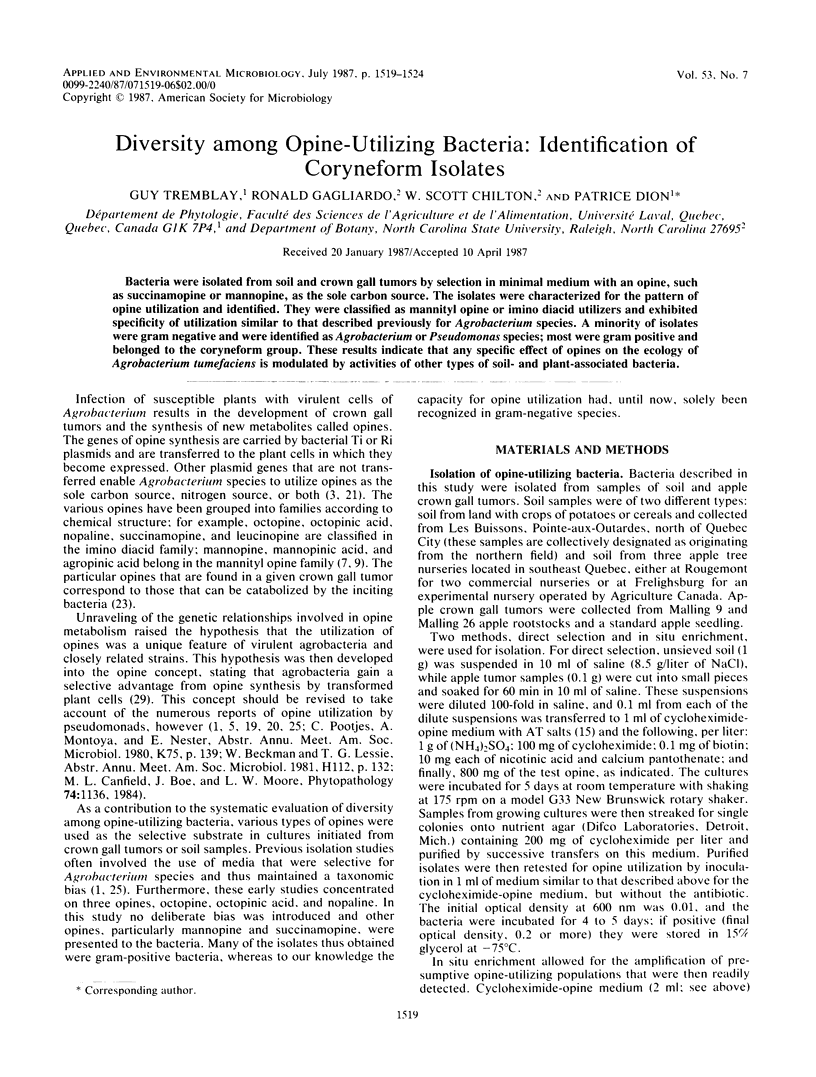
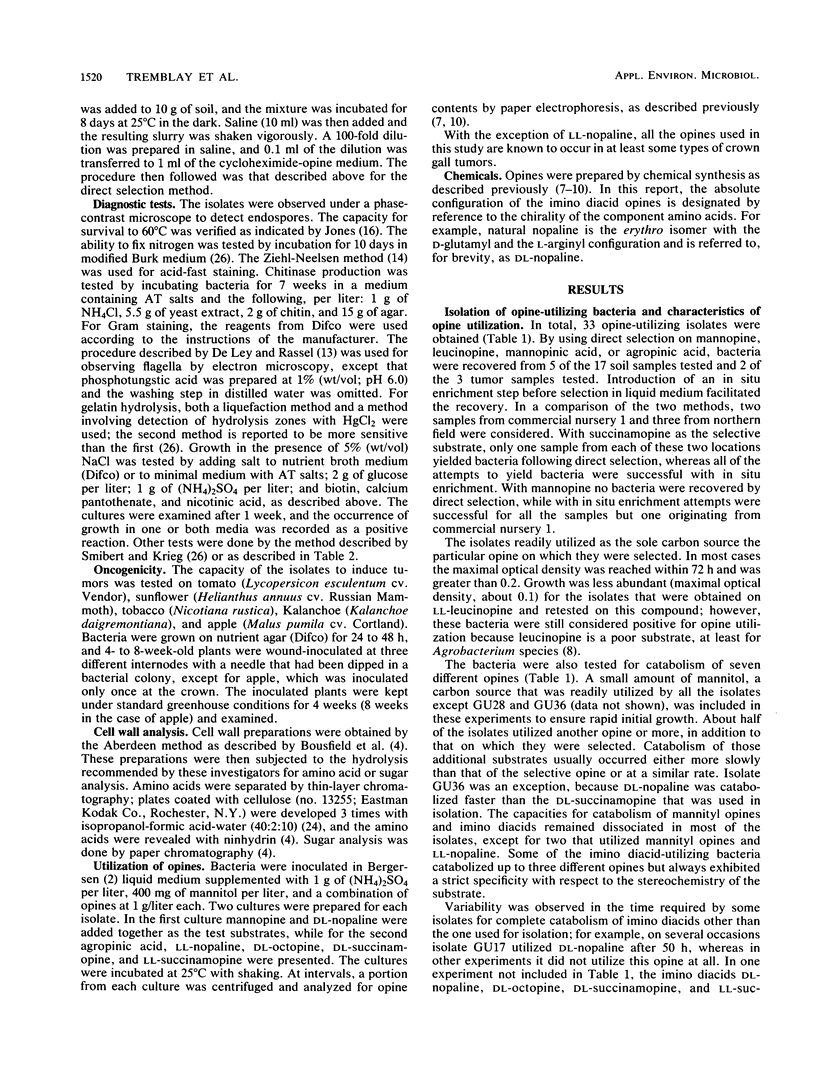
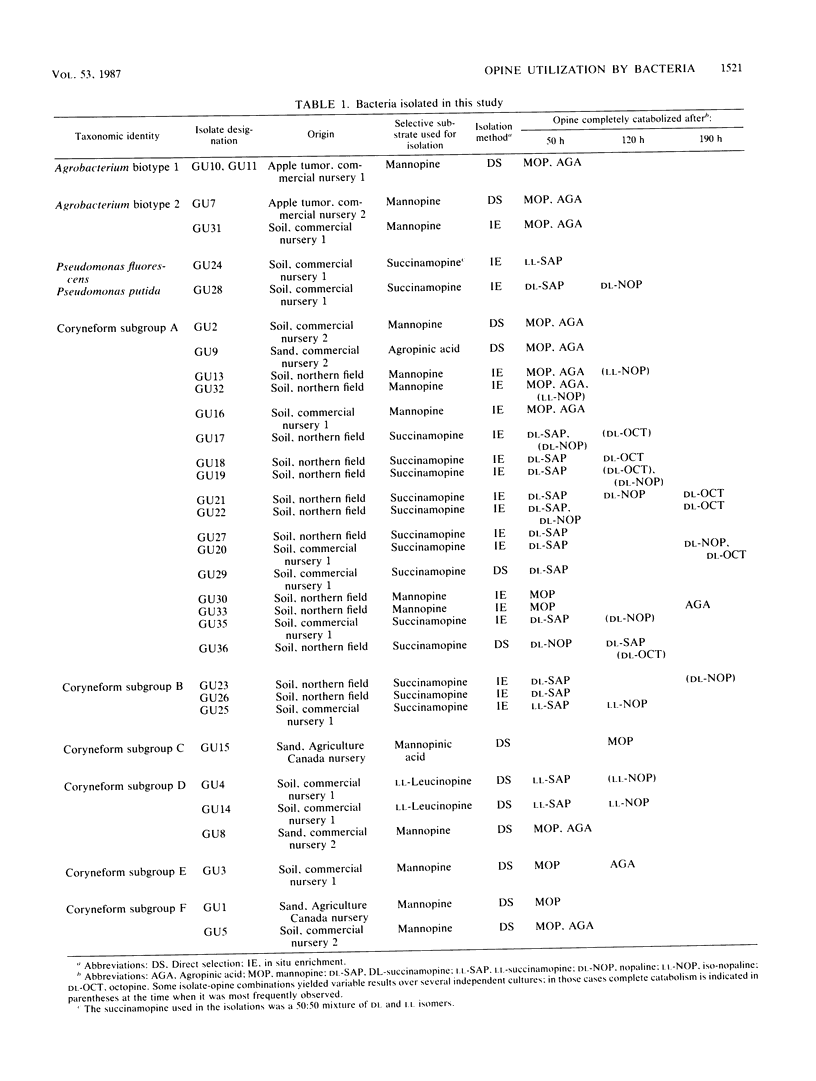
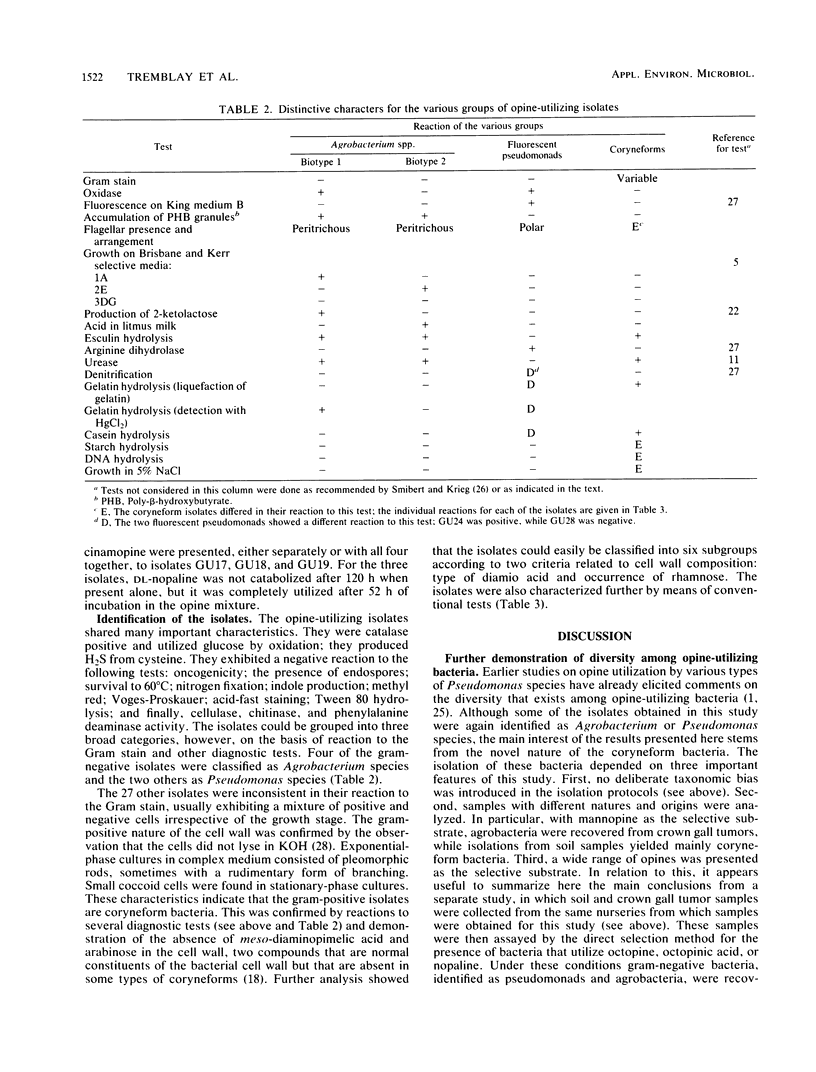
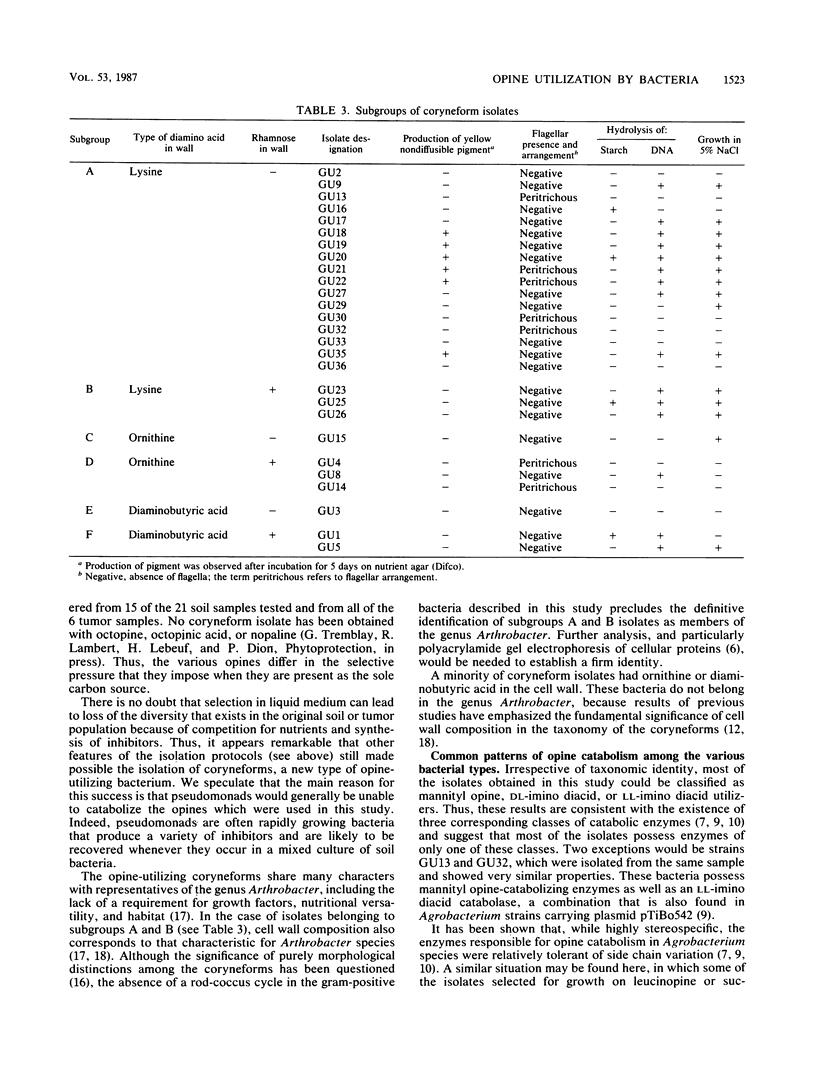
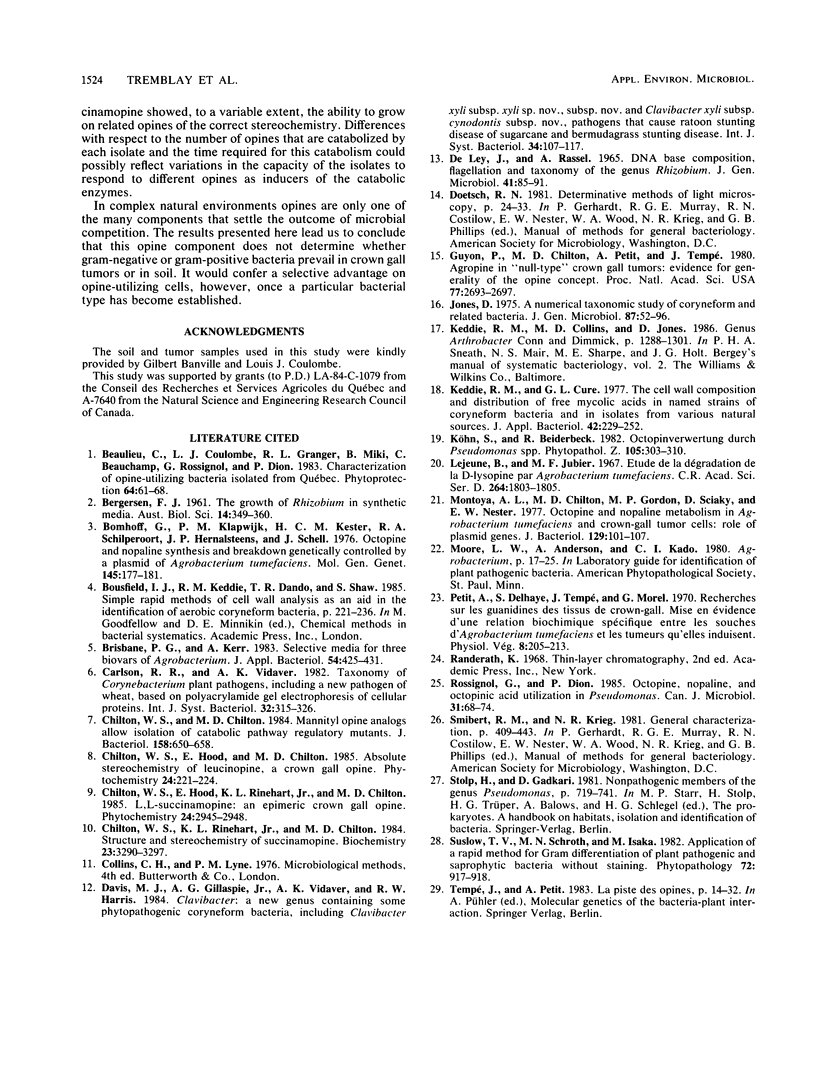
Selected References
These references are in PubMed. This may not be the complete list of references from this article.
- Bomhoff G., Klapwijk P. M., Kester H. C., Schilperoort R. A., Hernalsteens J. P., Schell J. Octopine and nopaline synthesis and breakdown genetically controlled by a plasmid of Agrobacterium tumefaciens. Mol Gen Genet. 1976 May 7;145(2):177–181. doi: 10.1007/BF00269591. [DOI] [PubMed] [Google Scholar]
- Chilton W. S., Chilton M. D. Mannityl opine analogs allow isolation of catabolic pathway regulatory mutants. J Bacteriol. 1984 May;158(2):650–658. doi: 10.1128/jb.158.2.650-658.1984. [DOI] [PMC free article] [PubMed] [Google Scholar]
- De Ley J., Rassel A. DNA base composition, flagellation and taxonomy of the genus Rhizobium. J Gen Microbiol. 1965 Oct;41(1):85–91. doi: 10.1099/00221287-41-1-85. [DOI] [PubMed] [Google Scholar]
- Guyon P., Chilton M. D., Petit A., Tempé J. Agropine in "null-type" crown gall tumors: Evidence for generality of the opine concept. Proc Natl Acad Sci U S A. 1980 May;77(5):2693–2697. doi: 10.1073/pnas.77.5.2693. [DOI] [PMC free article] [PubMed] [Google Scholar]
- Jones D. A numerical taxonomic study of coryneform and related bacteria. J Gen Microbiol. 1975 Mar;87(1):52–96. doi: 10.1099/00221287-87-1-52. [DOI] [PubMed] [Google Scholar]
- Keddie R. M., Cure G. L. The cell wall composition and distribution of free mycolic acids in named strains of coryneform bacteria and in isolates from various natural sources. J Appl Bacteriol. 1977 Apr;42(2):229–252. doi: 10.1111/j.1365-2672.1977.tb00689.x. [DOI] [PubMed] [Google Scholar]
- Montoya A. L., Chilton M. D., Gordon M. P., Sciaky D., Nester E. W. Octopine and nopaline metabolism in Agrobacterium tumefaciens and crown gall tumor cells: role of plasmid genes. J Bacteriol. 1977 Jan;129(1):101–107. doi: 10.1128/jb.129.1.101-107.1977. [DOI] [PMC free article] [PubMed] [Google Scholar]


